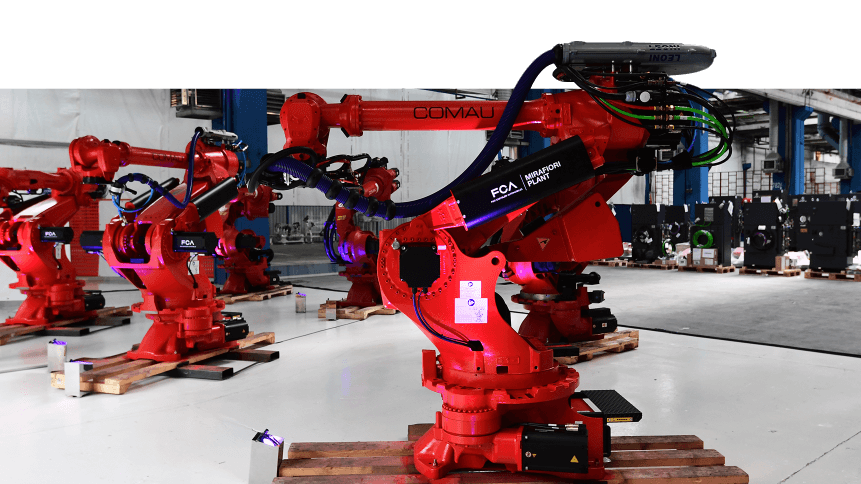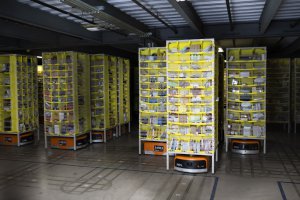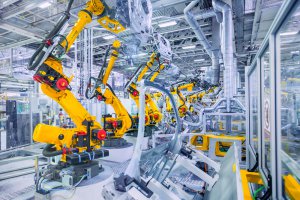Intelligent automation brings robots and clothing design to the same chic party

Robots might still sound futuristic to some, but automation technologies are already being widely used in many industries comprising from manufacturing, assembly, packing, and packaging to earth and space exploration, surgery, weaponry, laboratory research, and mass production.
According to the International Federation of Robotics, it is predicted that three million industrial robots would be in use by 2018, and that by 2020 the worldwide stock of operational industrial robots will increase from about 1,828,000 units to over 3 million units. This represents an average annual growth rate of 14% in just two years. Meanwhile, Interact Analysis predicts that by 2023 all regions will have exceeded 2019 levels of robot shipments, including China. and North America with the highest growth rates.
Robotics and artificial intelligence are said to cause disruptions across industry, as the pandemic has prompted companies to accelerate the deployment of new technologies to reduce costs, improve productivity — and be less dependent on real people.

Lawnmower-sized robots move around shelving units in Amazon’s Fulfillment Center. (Photo by Grant HINDSLEY / AFP)
Robots become next level sewing machine
In a recent report by The World Economic Forum (WEF), it was concluded that “a new generation of intelligent machines, powered by rapid advances in artificial intelligence (AI) and robotics, could potentially replace a large part of existing human jobs.”
Atlanta-based SoftWear Automation wants to make a billion T-shirts a year in the US by using robots. The robotics company, which was launched in 2012, had a working prototype within two years with the assistance of Georgia Tech Advanced Technology Development Center and a contract with DARPA.
The development of a production line for the mass production of shirts started in 2017, and the company signed a contract with a Chinese clothing manufacturer to set up a large production facility in Arkansas. Although the deal failed, SoftWear is focused on opening its clothing factories.
Are robots putting jobs at risk?
More than 20 billion T-shirts a year are produced by factories, most of them outside the US. According to the Bureau of Labor Statistics, an average US sewing machine operator makes $ 28,000 yearly. The sum works out to more than many countries where many T-shirts are actually being made, such as China, Vietnam or Guatemala.
These positions could be at risk with the introduction of sewing robots. According to the International Labor Organization (ILO), robots could replace nearly 90% of workers in textiles, clothing, and footwear in Cambodia, Vietnam, and other countries that employ millions of people, and is a major contributor to the localized economy.
Sewbo to combat automation challenges
Initially, it was concluded that sewing is challenging to automate because the fabric is woven and stretched while working with it. Seattle-based software developer, Jonathan Zornow, created an industrial robot called Sewbo to combat the problem. The fabric is manipulated and made compatible with the automated machine with a water-soluble stiffener.
After this process, the robot can manipulate the fabric just like a sheet of metal or plastic. The robot can then cut, turn over, sew and move the pieces of fabric with precision. After the garment is finished, it is soaked in hot water to remove stiffness and return the fabric to its original shape.
YOU MIGHT LIKE

Why virtual try-ons could be fashion’s holy grail
SoftWear has since raised US$30 million, including a US$2 million grant from the Walmart Foundation. Palaniswami Rajan, CEO of SoftWear, said it would take tens of millions of dollars to produce a billion t-shirts each year. In addition, the company will require several facilities, with its sewing robots and skilled workers.
Rajan said that Sewbot could produce a shirt every 50 seconds. By running continuously, a working line can make just over 620,000 shirts per year, and Rajan expects a continuous number of 2000 working bots to reach the one billion mark.

Want a progressive workforce? Don’t encourage your organization to fear the robots. Source: Shutterstock
Future of automation and jobs
Suspicions of robots displacing people and destroying jobs have been raised, but some argue that in the long term, automation will decentralize manufacturing, creating new, better jobs in many more places. Rajan has said that SoftWear will hire fewer people than the traditional t-shirt maker but believes his company will create better-paying jobs for the people who maintain the machines. In addition, the company intends to develop and train the workforce, eventually leading to fast and agile production.
Sewing robot manufacturers have pointed out that even an automated line requires a certain number of workers, and they believe that if companies move production back to their home country, they will help boost the local economy. However, one must note that the workforce required to operate an automated line is significantly less than a traditional factory, so even if a local economy benefits from new technologies around the world, there will definitely be job losses.









